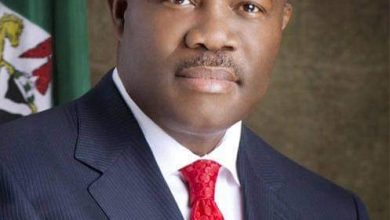How Fidelity Bank Expands Profit Superlatively

Fidelity Bank had its net interest income slowed down , however ,it wrenched up its bottom line supersonically with a deft application of management’s experience
With the release of the full year result for 2021 , Fidelity Bank ,a leading tier 2 lender ,truly , achieved a milestone in the last financial year with a supersonic jump in its net profit income ; this ,indeed, has left investors craning to take another look at the bank’s performance that left glimpses of what is possible within the bank that has the vision of attaining the status of a first tier financial services group in the soonest..
The bank’s performance was a harbinger of a juicier outing in the financial year 2021 and raises hope for a better future performance ; more so as it has proved beyond any doubt that it could keep at bay any threat from the raging cost of funds and low yield environment with a deft control of the credit risk
What cannot be disputed is that the financial year 2021 was highly challenging for many players in the Nigerian banking industry .But Fidelity Bank finished the year with impressive top and bottom lines in spite of some threats to its fortune . .Its revenue increased impressively by 21 % to N249.45b from N206.24b while interest income inched up 14.4 % to 202.24b from N176.75b. However, its interest income expense was ,no doubt , a threat to this bright scenario , it skyrocketed by 47.8% and its first victim was the bank’s net interest income , a guide to how well a bank manages the interest rates it pays for borrowing and lending ,which decreased by 8.8% to give it a negative outlook .. But the management of the bank averted this dangerous twist; by managing down its loan loss impairment by 67% to N5.52b in 2021 from N16.86b in 2020 , the heavily depressed loan loss impairment returned the net interest income back to positive ,albeit marginally, by 2.5%
After surviving the threat from interest income expenses , the coast appeared to be clear for it .Its major profitability metrics improved phenomenally to confirm the above feat .Its Earnings Per share took a giant stride to 43.5 % to 132k from 92k; its profit before and after tax inched up sharply by 45% and43% to N40.63b and N38.12b respectively from N28.05b and N26.65 b in the financial of 2020 .Its net profit margins followed the same trend and hit 15.3% from 12.9 % in the previous year while its return on Average Equity and assets improved from to 9.7 % and 0.96 % to 13.3 %and 1.3% within the period under review .
The above impressive performance was a consolidation of its 9month results in the year under review This was confirmed by Nneka Onyeali-Ikpe, MD/CEO of Fidelity Bank Plc while commenting on the results: “We were able to sustain our performance trend since the start of 2021 with an impressive double-digit growth in profit driven by 69.9% increase in net fee income which compensated for the decline in net interest income as average yield on liquid assets remain low. Profit before tax grew by 31.4% to N28.1bn from N21.3bn in 9M 2020 which translated to an increase in RoAE to 12.7% from 10.5% in 2020FY (11.0% in 9M 2020)
.To effectively compete, a strong company needs to adjust its internal strengths to the environmental opportunities just as its managers need to identify, combine, re-combine, and manage its resources, competencies and capability to explore its potential and perform better than the competitors . This is a major driver of Fidelity Bank profit engine
The core banking or lending remains the hard nut for any banker .Naturally , banking is coterminous with risk while cost funds ,cost of risks as well as yields on earning assets are the critical success factors or performance requirements that are fundamental to any player’s success . While there other sources of revenues ,the core banking or lending remains the heart of banking .This may not be farfetched . Its contributes little above or below three quarters to the total revenue comes .Sequel to this , all the technical training a banker receives is geared heavily towards lending ;when it is said that one is a good or an astute banker ,what ,in fact, is meant is that he or she is a shrewd lender or one who lends safely and profitably .
To lend safely and profitably ,the art of managing risks of mismatches between assets and liabilities and between borrowing and lending rates is sine qua non .This is where the tasks of cost of funds , cost of risks and yields on earnings assets are tackled . Moreover, adequate knowledge and skill in funds transfer pricing is another herculean issue or critical success factor before any banker can gain any competitive advantage in the core banking business .
To gain the above superior income more than its competitors among tier 2 lenders in2021 ,Fidelity Bank ,no doubt , secured the best possible combination its strong points or core competences within the critical success factors of the market . Its major headache was how to tame the rising cost of funds and operating costs amidst low interest rate environment. But it did as indicated by its impressive bottom line
RISING VOLUME OF TERM DEPOSIT AS A POTENTIAL SPOILER
As indicated above ,one of the core challenges was managing the skyrocketing cost of funds asides the prevailing lower interest rate environment . The high level of its cost of funds was principally due to its relatively high volume of term deposit in 2021 .Term deposits from retail customers jumped 77% to N330,60b from N186.94 b ; its corporate customers its increased to N142.40b by 54% from N92.29b .Overall ,the total term deposits in 2021 rose by 69%from N279.23b in 2020 to N472.473.00b
The rising profile of term deposits relative to other sources of the bank’s funding costs was a potential spoiler to its bottom line as its interest expense skyrocketed d in the year under review ; this led to a negative net interest income outlook by 8.8 % to N94.92 b from N104.12b . This outlook could be easily situated on the bank’s interest expense on deposits specifically its term deposits The expense on its term deposits alone jumped by 88% to N67.14b from N34.11b between 2020 and 2021.This was 62.5% of the total interest expense of N107.32b in 2021 compared to 47% in 2020 This scenario started early in the year . For instance ,out of the total interest expense of N38.82b incurred in the first half of 2021 compared to N39.02b in 2020 ,N26.27b came from interest expense on deposit while the remaining N13.03b was interest expense on borrowings. This is confirmed by its deposit mix in the year under review compared to the previous year with giant leap in its term deposit relative to other sources
HIGH LOAN GROWTH AS REVENUE PUSHER
In spite of these challenges, the management of Fidelity Bank appeared unperturbed. The leading tier 2 lender, took a rugged lane and doggedly moved ahead by boosting its net loans despite the prevailing low yield and high risk environment .To navigate this terrain and overcome those potential twin evils the bank increased of its loan stock by 25% . .In the first half ,it was 15% growth , but in the third quarter, Net Loans and Advances increased by 21.6% YTD to N1,612.9bn from N1,326.1bn in 2020FY.The bank ,however ,explained that the intervention fund facilities and the impact of foreign exchange rate contributed 22.9% and 6.5% of the growth in its loan book respectively in third quarter of 2021. The loan growth could be adjudged tactical ..The 25% loan growth in the full year 2021 , contributed heavily to its interest income despite the low yield environment ; it contributed 85% or N158b of the total interest income of N185.55b as against 75% in 2020 at N126.30b out of the total sum of N168.55b This income contribution from the loan was followed treasury bills and other investments principally from the amortized segment with N17.45Bb or 9,4% compared to N13.05b in the previous year .The positive impact of the tactical growth in the volume of loans by 25% led to 14.4 % increase in the bank’s interest income in2021 that consequently boosted I the bank’s gross earnings
ROBUST RISK MANAGEMENT AS RESCUE JOKER
However, while its large heart for risk generated the required momentum that pushed its revenue skyward , Fidelity Bank leadership had another joker that kept at bay the two potential evils of high cost of funds and the prevailing low yield . Its large heart for the risk was rested fully on its cutting edge expertise on risk control and management. Robust risk management is at the core of Fidelity Bank operation with three-tiered approach for enterprise-wide risk management . The bank has continued to see a dramatic improvement in asset quality with its cost of risk being among the industry best .In third quarter, its cost of risk came in at 0.2% while its t NPL ratio (Stage 3 Loans) dropped to 2.8% from 3.8% in 2020FY. Its cost of risk was 1.3% in the first half of 2020 ; 1.2%,9month ,2020 ;1.4%,full year 2020 . It was 0.4% ,first quarter, 2021 and 0.3% in the first half of 2021 . The positive impact of this impressive scenario was a cascading loan provision at the end of 2021 that saved its net interest income and gave it a positive outlook, though marginally after loan loss impairment. It credit loss expense was managed down to N5.52b from N16.86b,a drop of 67% leading to a Net interest income after credit loss expense of N89.40b against N87.27b ,an increase of 2.5 % This partly lifted its EPS
Without a sound asset quality engendered by its risk management savvy this feat could have been impossible as a raging cost of funds came up during the year as indicated by a considerable rise in Interest Expense ; its interest expense rose by 47.8 % to N107.b , from N72.6b No doubt ,the net interest income segment was tight ,it took the bank’s strong savvy in risk management to foil the spoiling role of heavy interest expense to deliver a positive outlook after loan loss impairment .Even with this ,it affected its net interest margin for the year 2021.
NON INTEREST INCOME : EARNINGS STABILIZING JOKER
However , as a good manager ,the management of Fidelity Bank jerked up some non interest income items in its balance sheet to stabilize its earnings . This is expected in low interest rate environment . During the period under review ,its fee and commission income inched up by 48% to N29.41b from N19.85b .However , its fee and commission expense rose with almost an equal force at 40%to N8.62b from N6.14b ,624 but its Net fee and commission income stood at N20.78% compared to N13.71,a 51.6% increment
Although a loss of N4.49b in 2021 as against a gain of N1.12b in 2020 that was registered on its trading activities posed a threat to its bottom line , this was ,however , averted by another giant leap from other operating income which rose by 85% to N17.80b from N9.60b ,principally from its Net foreign exchange gains of N11.56 b in 2021 compared to N8.19b in 2020 and Loan Recoveries N 5.21 b in 2021 against N495m in 2020
Consequently , the bank’s operating income inched up marginally by 4.8% to N133.50b from N127.43b while its operating expenses fell marginally by 1.4% to N82.46b from N83.63b .This led to an improvement in its cost to income ratio from 66% in 2020 to 62% in 2021 . Al these delivered the mega bulk in 2021
Fidelity Bank’s Balance sheet remained well structured, diversified and resilient as Total assets increased by 19.3% to N3,289.54b from N2,758.15b and Shareholders’ Funds to N300.31b from 273.53b at 9.8% 3 Full Impact Capital Adequacy Ratio (CAR) remained very strong, closing at 18.8% in the third quarter 2021 compared to 18.2% in 2020FY while Asset quality was sustained as NPL ratio closed at 4.2% in 2021 compared to 4.8% in 2020 In the first nine months of 2021 ,its Cost of Risk (CoR): came down to 0.2% compared to 1.4% in 2020FY
Total Deposits increased by 19 % YTD to N2,024 .8b fromN1,699.0bn in 2020FY, driven by increased deposit mobilization across all deposits types .Demand deposit moved up to N636.00 b from N596.55b by 6.6% ;Savings, by 12.4 % to N477.17b from N424.38b while the tenor increased sharply by 31% N503.28b from N384.34b .






